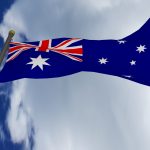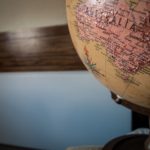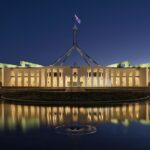Industrial policy won’t cure COVID woes

‘Governments are terrible at picking winners, but losers are great at picking governments’. It’s an old gag, but the observation remains truer today than ever. COVID-19 has seen governments unleash a fresh wave of industry policy as politicians abandon markets to boost their preferred industries.
This is a mistake. Markets have performed well during COVID-19 and there is no evidence that governments have got any better at picking winners. Industry policy is a recipe for lower living standards, slower post-pandemic recovery and increased corruption.
There are no free lunches when it comes to economics. Countries have limited resources to produce goods and services. Trade allows countries to specialise. It allows countries to focus limited resources — workers, capital, energy, materials — on producing the things that they’re good at producing compared to the rest of the world, earn money on international markets and then use some of that money to import the things they’re relatively worse at making.
The reason we trade is the same reason you don’t cut your own hair, build your own car or perform your own dentistry: specialisation makes us better off, trying to do everything yourself makes you poor.
This is the problem with industry policy. When governments use tariffs, quotas and subsidies to boost one industry, those resources come from other industries. As production increases in Industry A, it takes workers, capital, energy and materials from Industry B.
‘Buy local’ campaigns might sound intuitively attractive, but it means reallocating resources away from a country’s most productive and profitable industries and giving them to less productive and profitable industries.
Industrial policy, where governments intervene to support domestic manufacturing and other favoured industries, used to be Asia’s economic tiger balm, a widely used cure-all for catching up with the advanced economic powers. Japan was its exemplar, in practice and in theory.
Never mind that when you took a careful look at the structure of tariffs, trade controls and industrial subsidies that went to favoured sectors in Japan in the heyday of industrial policy, as did the late Ben Miller from the ANU, they were overwhelmingly lavished on declining industries, not highly productive sectors of the economy.
That’s just in manufacturing, not to mention the sinkhole of funding and support that went into agriculture and the old Liberal Democratic Party’s favourites in construction.
Asia, including China, learned the lesson that it was governments getting out of markets that boosted economic performance. The past 40 years of economic reform have seen steady Chinese government retreat from markets.
In the rush of blood at the sudden realisation in Washington and like-minded capitals that the Chinese Communist Party still runs China, it’s somehow been forgotten that it’s the retreat from government intervention in markets that’s driven China’s remarkable economic success thus far.
Yet China’s embrace of Made in China 2025 to boost domestic growth of 10 high-technology sectors including electric cars, other new energy vehicles, aerospace, next-generation information technology and telecommunications, advanced robotics and artificial intelligence heralded a new age industrial policy, which itself is said to be inspired by Germany’s Industrial 4.0 development plan.
To US policymakers it threatened to make China into a competitor technological superpower, although there’s still a question about how much Chinese state funding will go into the program compared with the R&D funding that the United States pours directly and indirectly into its high-tech sector.
If this context weren’t enough to inflame big power psychological anxieties, come COVID-19 and a host of other woes — the threat to national security, supply chain failure, health standards, employment protection, future growth potential — and the industrial policy tiger balm is once more all the rage.
In this week’s lead essay on the East Asia Forum, Gary Hufbauer and Euijin Jung point out that before the Trump era, ‘industrial policy … was regarded as a hangover from the Soviet Union, to be embraced only by misguided developing countries’.
Now President Trump has appealed to the disruption of international supply chains in justification of big government spending on domestic manufacturing — US$765 million to Kodak, for example, to produce generic drug ingredients in the United States, an entirely new line for the old photography company.
Hufbauer and Jung point to four main drivers behind this push for industrial policy, of which three predate COVID-19. Many Western policymakers are seeking to emulate China’s growth, growth which they attribute to China’s subsidies, state-owned enterprises and widespread government intervention.
The fear of China’s military build-up has similarly stoked interest in government intervention to support defence-related industries, while advocates of a ‘Green New Deal’ display a strong preference for government intervention over market-based solutions.
Rent-seekers are capturing governments everywhere, including in Australia with large subsidies to natural gas being pushed to help revive domestic manufacturing. With so much fiscal support available for economic recovery and the world’s superpowers playing the industrial policy game, it’s an easier argument for vested interests to capture politicians.
When it comes to industrial policy, as Hufbauer and Jung warn, COVID-19 has stepped on the accelerator. But the core economic problems of industrial policy haven’t changed one bit, and neither has its dismal historical record and performance.
This article was published by the East Asia Forum.
Based out of the Crawford School of Public Policy within the College of Asia and the Pacific at the Australian National University, the Forum is a joint initiative of the East Asian Bureau of Economic Research (EABER) and the South Asian Bureau of Economic Research (SABER).













